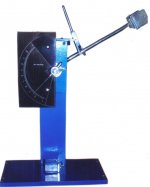After all these years of technological developments in pool - why isn't there a standard (non-subjective / non-variable) test for rail / cushion response ?
Maybe its not really relevant / important at the end of the day ?
I like the cloth speed test (Bob Jewetts ?) - 7 seconds from rail to 'just touches the rail' for tourny spec cloth on a 9 footer - easy & standardised.
I think my rails are somewhat below ideal - but would love to check via some standard test - and then see if I could improve them somehow if they are indeed below par...
Cheers.
Maybe its not really relevant / important at the end of the day ?
I like the cloth speed test (Bob Jewetts ?) - 7 seconds from rail to 'just touches the rail' for tourny spec cloth on a 9 footer - easy & standardised.
I think my rails are somewhat below ideal - but would love to check via some standard test - and then see if I could improve them somehow if they are indeed below par...
Cheers.
